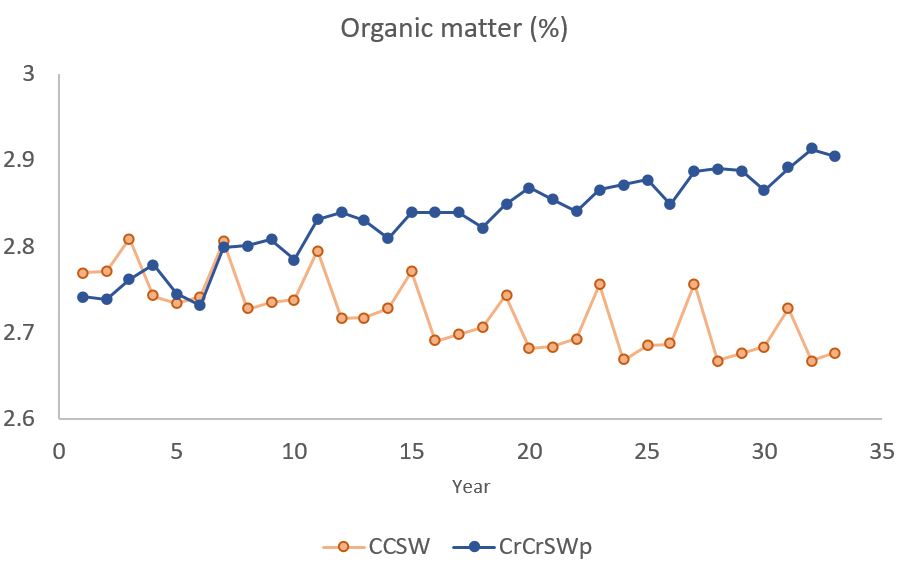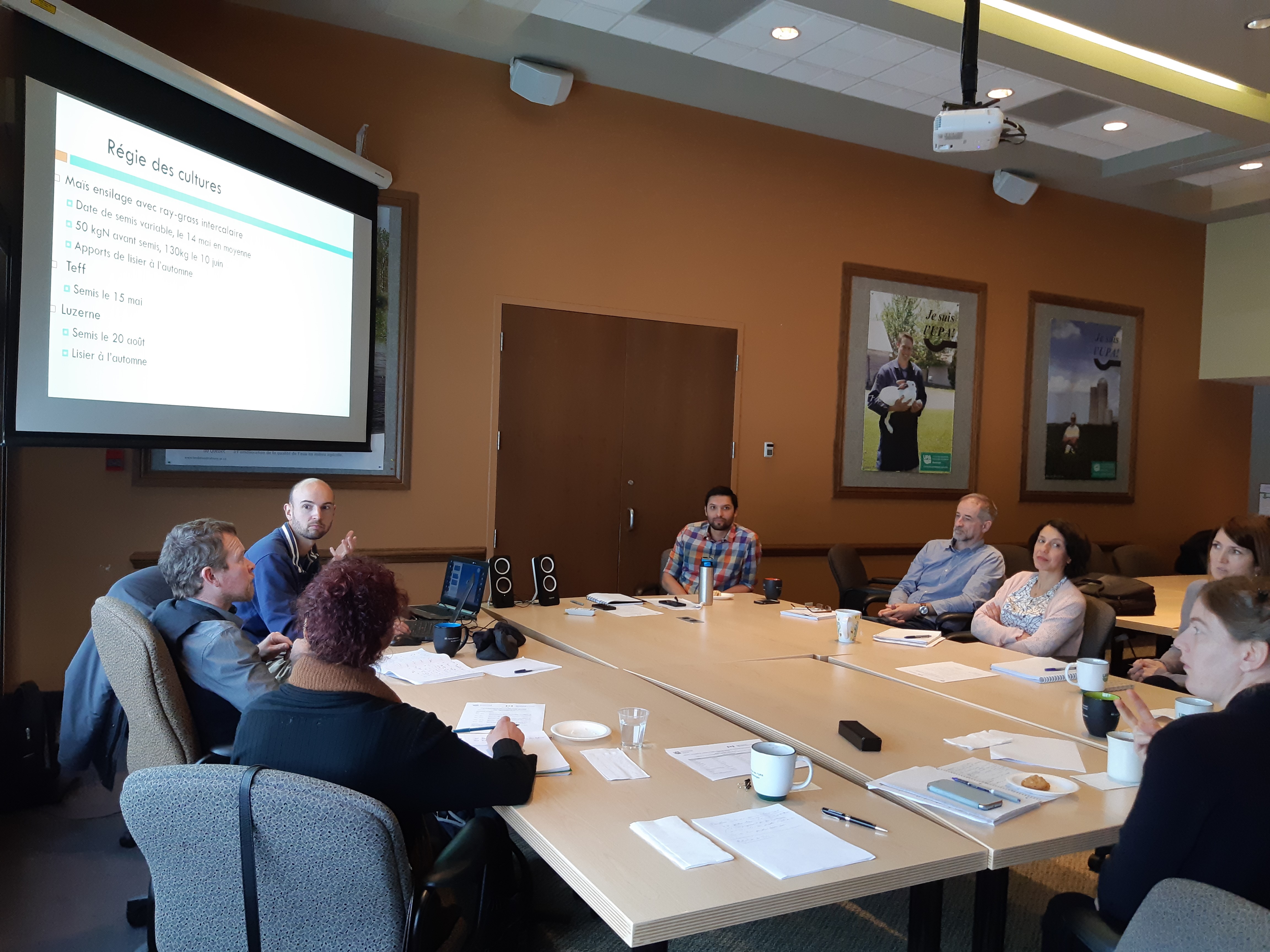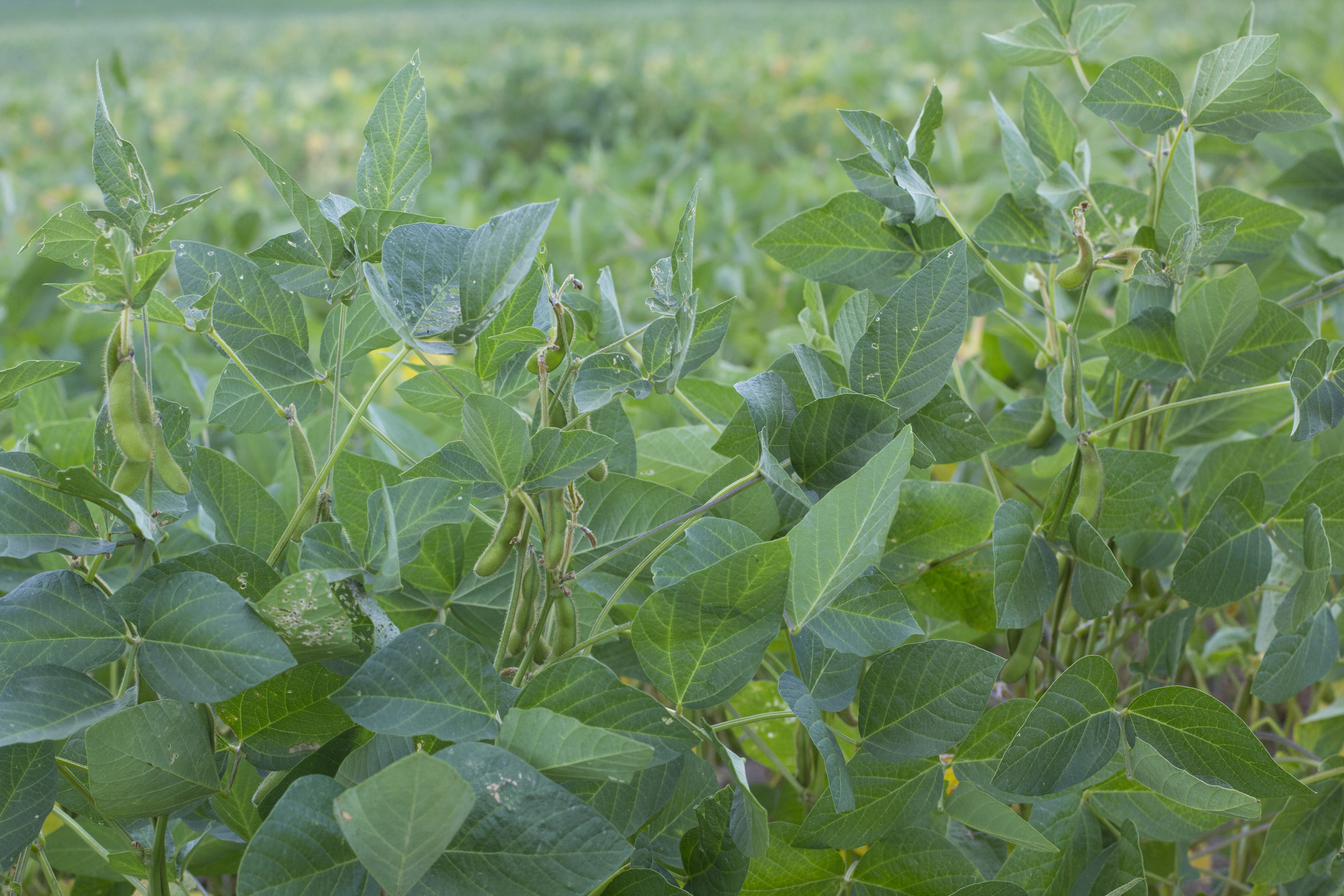Set up an interview
Media Relations
Agriculture and Agri-Food Canada
1-866-345-7972
aafc.mediarelations-relationsmedias.aac@agr.gc.ca
Adopting new ways of doing things may seem like a risky bet for agricultural producers because they cannot assess all the long-term effects. This is the case with the use of cover crops in rotations of field crops such as soybeans and corn. Although scientific research shows the benefits of cover crops for improving soil, water and air quality, producers are reluctant to change their practices.
Can science address producers’ concerns by integrating them from the start into a project using mathematical models to represent the complex interactions between soil, plants and climate? Some think it can. With the help of a consultant in modelling and participatory approaches, scientists from Agriculture and Agri-Food Canada (AAFC) in Québec, representatives from the Montérégie UPA and researchers from institutions including Université Laval and the Centre de recherche sur les grains (CÉROM) have tried a new collaborative approach with producers in the Rivière des Hurons watershed region.
They were invited to join a research and knowledge transfer project based on ‘participatory modelling.’ The collective expertise of the participants was used to develop new rotation systems that include cover crops.
“What a challenge! The systems considered had to provide an ecological service for the watershed, be tailored to the particularities of the farms in the targeted territory, and meet the producers’ needs for profitability. Then, their medium and long-term effects had to be assessed using modelling tools.”
- Stéphane Gariépy, Knowledge and Technology Transfer Manager, Agriculture and Agri-Food Canada
Between 2016 and 2019, producers, scientists and agri-environment stakeholders gathered in workshops on several occasions to share their respective objectives, develop a work plan and create prototypes of rotation systems. After field trials, they discussed the results of the modelling of the first prototypes and developed better rotation systems.
“We used the STICS crop-simulation tool to compare conventional rotation systems (for example corn–corn–soybean–spring wheat–peas) with those developed in the workshops (for example corn–ryegrass intercropped, corn–ryegrass intercropped, soybean, winter wheat after field peas). We were able to assess the impacts of these rotations on crop yields, and the amount of carbon (C) and nitrogen (N) in soils or certain greenhouse gas emissions.”
- Guillaume Jégo, Researcher in Modelling, Agriculture and Agri-Food Canada
The results obtained using a cover crop rotation system are encouraging.
- Reduced losses of organic matter from soils (see graph below);
- Reduced losses of C and N from soils, even in the short term, and reduced runoff to streams;
- Negligible effects on yields (no significant losses);
- No competition between corn and the cover crop;
- Possibility of reducing emissions of nitrous oxide (N2O), a powerful greenhouse gas.
Organic matter (%)

Description of above image
| Year | CCSW | CrCrSWp |
|---|---|---|
| 1 | 2.828421 | 2.727054 |
| 2 | 2.761787 | 2.842748 |
| 3 | 2.769533 | 2.741755 |
| 4 | 2.770699 | 2.738715 |
| 5 | 2.808972 | 2.761412 |
| 6 | 2.742588 | 2.778904 |
| 7 | 2.734342 | 2.745337 |
| 8 | 2.741672 | 2.731635 |
| 9 | 2.806474 | 2.79931 |
| 10 | 2.72747 | 2.801226 |
| 11 | 2.734758 | 2.807765 |
| 12 | 2.738215 | 2.784901 |
| 13 | 2.79577 | 2.831878 |
| 14 | 2.717017 | 2.839999 |
| 15 | 2.717142 | 2.83042 |
| 16 | 2.72772 | 2.809639 |
| 17 | 2.771324 | 2.840124 |
| 18 | 2.69028 | 2.839166 |
| 19 | 2.698026 | 2.839749 |
| 20 | 2.705814 | 2.821716 |
| 21 | 2.743754 | 2.84862 |
| 22 | 2.681326 | 2.86836 |
| 23 | 2.683866 | 2.854534 |
| 24 | 2.693362 | 2.840957 |
| 25 | 2.75604 | 2.866569 |
| 26 | 2.668332 | 2.871567 |
| 27 | 2.684824 | 2.877564 |
| 28 | 2.686532 | 2.84837 |
| 29 | 2.756748 | 2.887393 |
| 30 | 2.667791 | 2.890141 |
| 31 | 2.676412 | 2.888517 |
| 32 | 2.6842 | 2.865112 |
| 33 | 2.728345 | 2.890808 |
| 34 | 2.667832 | 2.913297 |
| 35 | 2.676662 | 2.904135 |
| 36 | 2.683408 | 2.892432 |
CCSW: corn − corn − spring wheat
CrCrSWp: corn + ray grass − corn + ray grass − spring wheat followed by a winter pea
At the end of the project, around 10 producers chose to use rotation prototypes including cover crops on their land. Everyone saw the benefits of sharing their knowledge and the value of using mathematical models to design and evaluate new systems.
While climate change requires a fairly rapid adaptation of cultivation methods, this innovative approach will serve as a pillar for the accelerated adoption of best practices in cultivation to promote soil, air and water quality, as well as to improve the profitability of Canadian farms.
Key Discoveries (Benefits)
- Producers, scientists and agri-environment stakeholders have come together in workshops on several occasions to share their respective objectives and develop prototypes of rotation systems.
- The tests carried out have demonstrated the advantages of adopting a rotation system with cover crops, which include the reduction of losses of organic matter, carbon and nitrogen in soils and a reduction of runoff to waterways, all without significant loss of yields.
- At the end of the project, around 10 producers chose to use rotation prototypes including cover crops on their land.
Photo gallery


Related information
- Stéphane Gariépy: Stéphane Gariépy, P.Eng., M.Sc. | Directory of scientists and professionals (science.gc.ca)
- Guillaume Jégo: Guillaume Jégo | Directory of scientists and professionals (science.gc.ca)
- Quebec Research and Development Centre: Quebec Research and Development Centre | Directory of scientists and professionals (science.gc.ca)